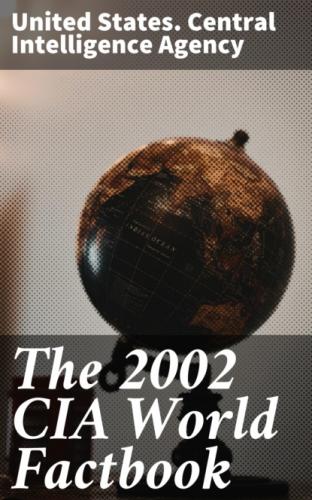Telephones - mobile cellular: 228,604 (1999)
Telephone system: general assessment: very inadequate domestic service, particularly in rural areas; likely improvement with privatization of national telephone company and encouragement to private investment; good international service (1999) domestic: national trunk network consists mostly of digital microwave radio relay; fiber-optic links now in use in Colombo area and two fixed wireless local loops have been installed; competition is strong in mobile cellular systems; telephone density remains low at 2.6 main lines per 100 persons (1999) international: submarine cables to Indonesia and Djibouti; satellite earth stations - 2 Intelsat (Indian Ocean) (1999)
Radio broadcast stations: AM 26, FM 45, shortwave 1 (1998)
Radios: 3.85 million (1997)
Television broadcast stations: 21 (1997)
Televisions: 1.53 million (1997)
Internet country code: .lk
Internet Service Providers (ISPs): 5 (2000)
Internet users: 121,500 (2001)
Transportation Sri Lanka
Railways: total: 1,463 km broad gauge: 1,404 km 1.676-m gauge narrow gauge: 59 km 0.762-m gauge (2001)
Highways: total: 11,285 km paved: 10,721 km unpaved: 564 km (1998 est.)
Waterways: 430 km (navigable by shallow-draft craft)
Pipelines: crude oil and petroleum products 62 km (1987)
Ports and harbors: Colombo, Galle, Jaffna, Trincomalee
Merchant marine: total: 18 ships (1,000 GRT or over) totaling 137,321 GRT/233,367 DWT ships by type: bulk 1, cargo 15, container 1, petroleum tanker 1, includes some foreign-owned ships registered here as a flag of convenience: Germany 9, Hong Kong 1, United Arab Emirates 1 (2002 est.)
Airports: 15 (2001)
Airports - with paved runways: total: 14 over 3,047 m: 1 1,524 to 2,437 m: 7 914 to 1,523 m: 6 (2001)
Airports - with unpaved runways: total: 1 under 914 m: 1 (2001)
Military Sri Lanka
Military branches: Army, Navy, Air Force, Police Force
Military manpower - military age: 18 years of age (2002 est.)
Military manpower - availability: males age 15-49: 5,347,153 (2002 est.)
Military manpower - fit for military service: males age 15-49: 4,148,825 (2002 est.)
Military manpower - reaching military age annually: males: 193,522 (2002 est.)
Military expenditures - dollar figure: $719 million (FY98)
Military expenditures - percent of GDP: 4.2% (FY98)
Transnational Issues Sri Lanka
Disputes - international: none
This page was last updated on 1 January 2002
========================================================================
Congo, Republic of the
Introduction
Congo, Republic of the
Background: Upon independence in 1960, the former French region of Middle Congo became the Republic of the Congo. A quarter century of experimentation with Marxism was abandoned in 1990 and a democratically elected government installed in 1992. A brief civil war in 1997 restored former Marxist President SASSOU-NGUESSO.
Geography Congo, Republic of the
Location: Western Africa, bordering the South Atlantic Ocean, between
Angola and Gabon
Geographic coordinates: 1 00 S, 15 00 E
Map references: Africa
Area: total: 342,000 sq km water: 500 sq km land: 341,500 sq km
Area - comparative: slightly smaller than Montana
Land boundaries: total: 5,504 km border countries: Angola 201 km, Cameroon 523 km, Central African Republic 467 km, Democratic Republic of the Congo 2,410 km, Gabon 1,903 km
Coastline: 169 km
Maritime claims: territorial sea: 200 NM
Climate: tropical; rainy season (March to June); dry season (June to October); constantly high temperatures and humidity; particularly enervating climate astride the Equator
Terrain: coastal plain, southern basin, central plateau, northern basin
Elevation extremes: lowest point: Atlantic Ocean 0 m highest point:
Mount Berongou 903 m
Natural resources: petroleum, timber, potash, lead, zinc, uranium, copper, phosphates, natural gas, hydropower
Land use: arable land: 1% permanent crops: 0% other: 99% (1998 est.)
Irrigated land: 10 sq km (1998 est.)
Natural hazards: seasonal flooding
Environment - current issues: air pollution from vehicle emissions; water pollution from the dumping of raw sewage; tap water is not potable; deforestation
Environment - international agreements: party to: Biodiversity, Climate
Change, Desertification, Endangered Species, Ozone Layer Protection,
Tropical Timber 83, Tropical Timber 94, Wetlands signed, but not ratified:
Law of the Sea
Geography - note: about 70% of the population lives in Brazzaville,
Pointe-Noire, or along the railroad between them
People Congo, Republic of the
Population: 2,958,448 note: estimates for this country explicitly take into account the effects of excess mortality due to AIDS; this can result in lower life expectancy, higher infant mortality and death rates, lower population and growth rates, and changes in the distribution of population by age and sex than would otherwise be expected (July 2002 est.)
Age structure: 0-14 years: 42.4% (male 630,985; female 622,024) 15-64 years: 54.3% (male 783,238; female 823,882) 65 years and over: 3.3% (male 39,369; female 58,950) (2002 est.)
Population growth rate: 2.18% (2002 est.)
Birth rate: 37.91 births/1,000 population (2002 est.)
Death rate: 16.1 deaths/1,000 population (2002 est.)
Net migration rate: 0 migrant(s)/1,000 population (2002 est.)
Sex ratio: at birth: 1.03 male(s)/female under 15 years: 1.01 male(s)/female 15-64 years: 0.95 male(s)/female 65 years and over: 0.67 male(s)/female total population: 0.97 male(s)/female (2002 est.)
Infant mortality rate: 97.91 deaths/1,000 live births (2002 est.)
Life expectancy at birth: 51.24 years (2002 est.) male: Total fertility rate: 4.94 children born/woman (2002 est.)
HIV/AIDS - adult prevalence rate: 6.43% (1999 est.)
HIV/AIDS - people living with HIV/AIDS: 86,000 (1999 est.)
HIV/AIDS - deaths: 8,600 (1999 est.)
Nationality: noun: Congolese (singular and plural) adjective: Congolese or Congo
Ethnic groups: Kongo 48%, Sangha 20%, M'Bochi 12%, Teke 17%, Europeans and other 3% note: may be half that in 1998, following the widespread destruction of foreign businesses in 1997
Religions: Christian 50%, animist 48%, Muslim 2%
Languages: French (official), Lingala and Monokutuba (lingua franca trade languages), many local languages and dialects (of which Kikongo has the most users)
Literacy: definition: age 15 and over can read and write total population: 74.9% male: 83.1% female:
